R.J. Stowell's Blog: rjsomeone, page 80
April 1, 2018
Artists and Their Music
 In the post about audiation, I came across the photo of Hendrix with the record player. I'd been meaning to post a collection of photos and this seemed an appropriate time. Interesting how music shapes our lives.
In the post about audiation, I came across the photo of Hendrix with the record player. I'd been meaning to post a collection of photos and this seemed an appropriate time. Interesting how music shapes our lives. Marilyn Monroe - Audrey Hepburn
Marilyn Monroe - Audrey Hepburn The Chairman of the Board
The Chairman of the Board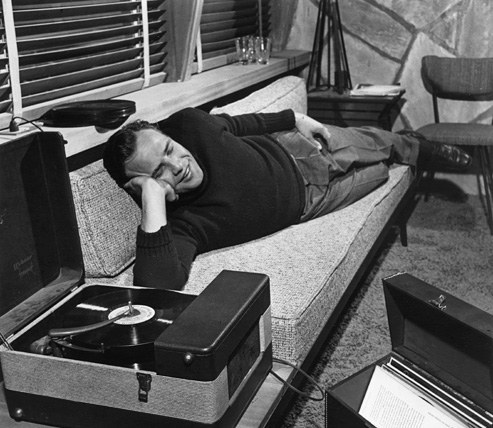 Brando
Brando Elton John
Elton John
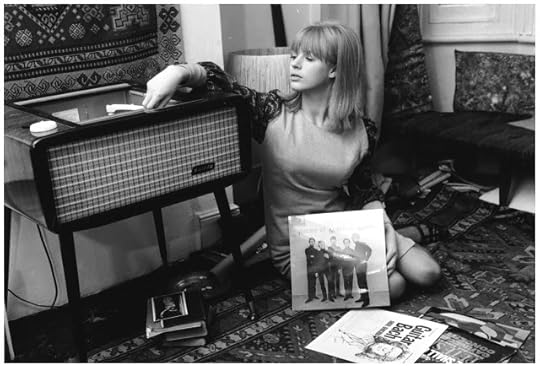 Marianne Faithfull
Marianne Faithfull
Published on April 01, 2018 19:57
Henrix and Audiation
 There is no record of Hendrix rehearsing in the studio, but if there were, what an event it would be. There are musicians, of course, Steve Howe of Yes comes to mind, who are classically trained, who read and are able to transcribe music and have the theory to understand the complexities of what they do. Then there are people like Hendrix (and McCartney who, without the ability to read music, has composed symphonies). We know that Hendrix loved the studio because it enabled him to record long, complex tracks like "1983… (A Merman I Should Turn to Be)" in separate sessions and edit them together—this was done of necessity because the only three musicians on the track are Hendrix, Mitch Mitchell and Chris Wood of Traffic on flute. In order for him to be able to maintain control over such a long, structured track, Hendrix must have heard the different parts in his head with great clarity. This is known in music theory as audiation. When you compose music, you are constantly audiating - your "inner ear" "hears" something, you write it down, you check it, and if it matches, you move on. If it doesn't, then you modify your understanding of what it is you're hearing until you are.
There is no record of Hendrix rehearsing in the studio, but if there were, what an event it would be. There are musicians, of course, Steve Howe of Yes comes to mind, who are classically trained, who read and are able to transcribe music and have the theory to understand the complexities of what they do. Then there are people like Hendrix (and McCartney who, without the ability to read music, has composed symphonies). We know that Hendrix loved the studio because it enabled him to record long, complex tracks like "1983… (A Merman I Should Turn to Be)" in separate sessions and edit them together—this was done of necessity because the only three musicians on the track are Hendrix, Mitch Mitchell and Chris Wood of Traffic on flute. In order for him to be able to maintain control over such a long, structured track, Hendrix must have heard the different parts in his head with great clarity. This is known in music theory as audiation. When you compose music, you are constantly audiating - your "inner ear" "hears" something, you write it down, you check it, and if it matches, you move on. If it doesn't, then you modify your understanding of what it is you're hearing until you are.By contrast, musicians with poor audiation tend to have problems creating music, unless there's someone in the room who can do it for them, namely a gifted producer. The most infamous example goes back again to Hendrix: one of his concert-stoppers early in his career was "Wild Thing," a song that was originally a hit for the English band the Troggs. The Troggs, it's fair to say, were not audiators. As long as they had producer Larry Page to direct them, they were able to make songs of classic simplicity like "Wild Thing" (which they didn't write), "With A Girl Like You" and "Love Is All Around" (which they did), but when they neglected to invite Page along, they found themselves struggling to agree on what exactly they ought to be doing. The result was captured by their engineers one night in the legendary Troggs Tape, a recording of them arguing in the studio. It wasn't a case of alpha musicians bickering over a sound or an arrangement, it was a studio ball of confusion. It's an interesting listen if you have time on your hands, and often hilarious. The point is this: had their usual producer been in the room, he would have been able to suggest a direction that the band would have gone with. In his absence, it's clear that nobody has a coherent idea of what the track ought to sound like.

Audiation is not a substitute for scoring. There are levels of detail that you can't just hum to other people. Had Hendrix lived, I suspect he might have learned to write music because his ideas were becoming more and more complex and the people he wanted to play with were at a level that he would have needed some study to keep up with them. It's the kind of thing that haunted Lennon. He had the audiation, but couldn't express it, often not even to George Martin. Aside from Hendrix and The Beatles, other musicians who have no formal training in music but were blessed instead with an innate ability to hear the music in their heads (audiation in its truest form) include Dave Grohl, Robert Johnson, Eddie Van Halen, Michael Jackson Eric Clapton and Elvis. Pretty good trick.
Published on April 01, 2018 06:15
March 31, 2018
I saw the best minds of my generation...
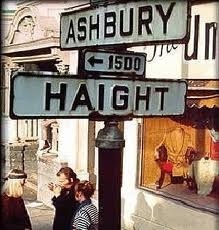 Things are cyclical. (Things. Funny word. Means everything and anything. Other words have come and gone, from "shit" to "junk" to "jawn," yet we always colloquially revert back to "things.") The word "hippie," as well, derives from "hip" and "hipster," (which of course is the millennials' lazy incarnation of the hippie) and was initially used to describe Beatniks who'd moved into Greenwich Village, Venice and the Haight. The origins of the terms "hip" and "hep" are uncertain, yet by the 1940s both had become part of jive slang and meant "fashionable or up-to-date." The Beats adopted the term "hip," and early hippies inherited the language and counter-cultural values of the Beat Generation. They created their own communities, listened to psychedelic music, embraced the sexual revolution, and used drugs such as cannabis, LSD, and psilocybin mushrooms to explore altered states of consciousness. Since the 1960s, hippie culture has been assimilated by mainstream society, including health food, music festivals, contemporary sexual mores, and the cyberspace revolution.
Things are cyclical. (Things. Funny word. Means everything and anything. Other words have come and gone, from "shit" to "junk" to "jawn," yet we always colloquially revert back to "things.") The word "hippie," as well, derives from "hip" and "hipster," (which of course is the millennials' lazy incarnation of the hippie) and was initially used to describe Beatniks who'd moved into Greenwich Village, Venice and the Haight. The origins of the terms "hip" and "hep" are uncertain, yet by the 1940s both had become part of jive slang and meant "fashionable or up-to-date." The Beats adopted the term "hip," and early hippies inherited the language and counter-cultural values of the Beat Generation. They created their own communities, listened to psychedelic music, embraced the sexual revolution, and used drugs such as cannabis, LSD, and psilocybin mushrooms to explore altered states of consciousness. Since the 1960s, hippie culture has been assimilated by mainstream society, including health food, music festivals, contemporary sexual mores, and the cyberspace revolution.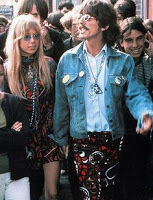 George Harrison in San FranciscoIn 1967, the Human Be-In in Golden Gate Park in San Francisco and the Elysian Fields' Love-in popularized hippie culture, leading to the Summer of Love on the Left Coast, and Woodstock in the East. Hippies in Mexico, known as jipitecas, formed La Onda and gathered at Avándaro, while in New Zealand, nomadic housetruckers practiced alternative lifestyles and promoted sustainable energy at Nambassa. In the United Kingdom, mobile "peace convoys" of new age travelers made summer pilgrimages to free music festivals at Stonehenge and later (in 1970) to the gigantic Isle of Wight Festival with a crowd of around half a million. In Australia hippies gathered at Nimbin for the 1973 Aquarius Festival and the annual Cannabis Law Reform Rally or MardiGrass. "Piedra Roja Festival", a major hippie event in Chile, was held in 1970.
George Harrison in San FranciscoIn 1967, the Human Be-In in Golden Gate Park in San Francisco and the Elysian Fields' Love-in popularized hippie culture, leading to the Summer of Love on the Left Coast, and Woodstock in the East. Hippies in Mexico, known as jipitecas, formed La Onda and gathered at Avándaro, while in New Zealand, nomadic housetruckers practiced alternative lifestyles and promoted sustainable energy at Nambassa. In the United Kingdom, mobile "peace convoys" of new age travelers made summer pilgrimages to free music festivals at Stonehenge and later (in 1970) to the gigantic Isle of Wight Festival with a crowd of around half a million. In Australia hippies gathered at Nimbin for the 1973 Aquarius Festival and the annual Cannabis Law Reform Rally or MardiGrass. "Piedra Roja Festival", a major hippie event in Chile, was held in 1970.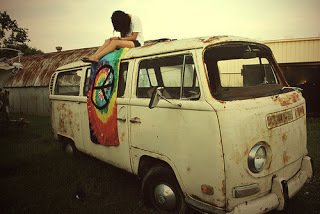
A July 1968 Time magazine study on hippie philosophy credited the foundation of the hippie movement with historical precedent as far back as the counterculture of the Ancient Greeks, espoused by philosophers like Diogenes of Sinope and the Cynics as early examples of hippie culture. It also named as notable influences the religious and spiritual teachings of Henry David Thoreau, Hillel the Elder, Jesus, Buddha, St. Francis of Assisi, Gandhi, and J.R.R. Tolkien. The first signs of modern "proto-hippies" emerged in fin de siècle Europe. Between 1896 and 1908, a German youth movement arose as a countercultural reaction to the organized social and cultural clubs that centered on German folk music. Known as Der Wandervogel ("migratory bird"), the movement opposed the formality of traditional German clubs, instead emphasizing amateur music and singing, creative dress, and communal outings involving hiking and camping. Inspired by the works of Friedrich Nietzsche, Goethe, Hermann Hesse, and Eduard Baltzer, Wandervogel attracted thousands of young Germans who rejected the rapid trend toward urbanization and yearned for the pagan, back-to-nature spiritual life of their ancestors.
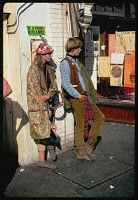 During the first several decades of the 20th century, Germans settled around the United States, bringing the values of the Wandervogel with them. Over time, young Americans adopted the beliefs and practices of the new immigrants. One group, called the "Nature Boys", took to the California desert and raised organic food, espousing a back-to-nature lifestyle like the Wandervogel.
During the first several decades of the 20th century, Germans settled around the United States, bringing the values of the Wandervogel with them. Over time, young Americans adopted the beliefs and practices of the new immigrants. One group, called the "Nature Boys", took to the California desert and raised organic food, espousing a back-to-nature lifestyle like the Wandervogel. Beats like Allen Ginsberg crossed over from the beat movement and became fixtures of the burgeoning hippie and anti-war movements. By 1965, hippies had become an established social group in the U.S., while the hippie ethos influenced The Beatles and others in the United Kingdom and other parts of Europe, and they in turn influenced their American counterparts. Hippie culture spread worldwide through a fusion of rock music, folk, blues, and psychedelic rock; it found expression in literature, the dramatic arts, fashion, and the visual arts, including film, posters advertising rock concerts, and album covers.
...destroyed by madness, starving hysterical naked.
Published on March 31, 2018 08:00
Hippie Portrait - Eight Miles High
 Eight miles high and when you touch downYou'll find that it's stranger than knownSigns in the street that say where you're going
Eight miles high and when you touch downYou'll find that it's stranger than knownSigns in the street that say where you're goingAre somewhere just being their own
Nowhere is there warmth to be foundAmong those afraid of losing their groundRain gray town known for its soundIn places small faces unbound
Round the squares huddled in stormsSome laughing some just shapeless formsSidewalk scenes and black limousinesSome living some standing alone
Published on March 31, 2018 07:33
March 30, 2018
45s
 Suffice it to say that I am satisfied with my digital recordings and Spotify is just fine for the cars, but it's the tactile sense that's missing with the virtual world. An album cover on my TV screen does not make up for holding Dark Side in my hands, for thumbing through the pages of Tommy or Magical Mystery Tour, and how, exactly, does today's digital music generation roll a joint without a gatefold LP? For the past couple days, I've had an urge to hear the instrumental intro to Lou Reed's Rock 'n' Roll Animal (AM9). The remarkable guitar duet by Dick Wagner and Steve Hunter is a monster live performance but I've become such a vinyl snob these days that I want to pick up a copy and hear it the way it should be heard, and without the iconic album cover flipping from side to side on my TV screen and counting down the seconds till the next track.
Suffice it to say that I am satisfied with my digital recordings and Spotify is just fine for the cars, but it's the tactile sense that's missing with the virtual world. An album cover on my TV screen does not make up for holding Dark Side in my hands, for thumbing through the pages of Tommy or Magical Mystery Tour, and how, exactly, does today's digital music generation roll a joint without a gatefold LP? For the past couple days, I've had an urge to hear the instrumental intro to Lou Reed's Rock 'n' Roll Animal (AM9). The remarkable guitar duet by Dick Wagner and Steve Hunter is a monster live performance but I've become such a vinyl snob these days that I want to pick up a copy and hear it the way it should be heard, and without the iconic album cover flipping from side to side on my TV screen and counting down the seconds till the next track. 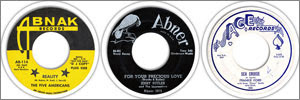 OK, I'm back. I took the plunge. I found Rock 'n' Roll Animal for $6.99 and I bought a pretty mint Ten Years After for a buck 99. Pretty good score. I also found a nice copy of "Pleasant Valley Sunday" on 45 with a photo sleeve; so I'm happy.
OK, I'm back. I took the plunge. I found Rock 'n' Roll Animal for $6.99 and I bought a pretty mint Ten Years After for a buck 99. Pretty good score. I also found a nice copy of "Pleasant Valley Sunday" on 45 with a photo sleeve; so I'm happy. 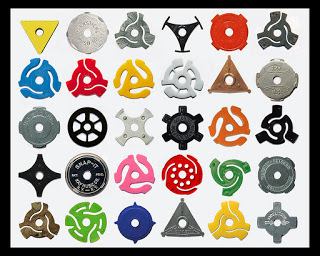 Interestingly, there are those who actually argue the superior sound quality of the 45, based on the increase of speed and the wider grooves. No one has ever persuaded me that the quality of a 45 is superior on any level, and I would maintain that the typical 45 lacks sorely in manufacture and quality control. That said, I am a collector. I adore my 45s. I love the look, the diversity of the labels, the size and format. I play them on an RCA 1953 bakelite 45 phonograph. It's vacuum tube driven and if you don’t allow for it to warm up, you'll only hear the sound coming off the needle and not through the phonograph's speaker. Despite being fully restored, the motor's hum is audible, though not over the speaker. The quality of the sound is rich and heady, but quality here is subjective. There are perceptible clicks and hisses, and an empty, somewhat hollow sound that just, well, sounds authentic. I guess it's an acquired taste.
Interestingly, there are those who actually argue the superior sound quality of the 45, based on the increase of speed and the wider grooves. No one has ever persuaded me that the quality of a 45 is superior on any level, and I would maintain that the typical 45 lacks sorely in manufacture and quality control. That said, I am a collector. I adore my 45s. I love the look, the diversity of the labels, the size and format. I play them on an RCA 1953 bakelite 45 phonograph. It's vacuum tube driven and if you don’t allow for it to warm up, you'll only hear the sound coming off the needle and not through the phonograph's speaker. Despite being fully restored, the motor's hum is audible, though not over the speaker. The quality of the sound is rich and heady, but quality here is subjective. There are perceptible clicks and hisses, and an empty, somewhat hollow sound that just, well, sounds authentic. I guess it's an acquired taste. Here's the deal. I collect 45s for the thrill of collecting based on my interest in the era (I confine my collection to the 60s and early 70s), the unique format, the bang for the buck (45s are notably inexpensive), and the aesthetics. I appreciate the Snap, Crackle, Pop of the format, the wow, the hiss, and the nostalgia. I doubt that I will ever take my mint version of 10cc's "I'm Not in Love" and play it on a $600 Shinola turntable. If I did, I have my doubts that the experience would exceed the digital sonic landscape created by the LP, let alone my SACD of The Original Soundtrack.
Here's the deal. I collect 45s for the thrill of collecting based on my interest in the era (I confine my collection to the 60s and early 70s), the unique format, the bang for the buck (45s are notably inexpensive), and the aesthetics. I appreciate the Snap, Crackle, Pop of the format, the wow, the hiss, and the nostalgia. I doubt that I will ever take my mint version of 10cc's "I'm Not in Love" and play it on a $600 Shinola turntable. If I did, I have my doubts that the experience would exceed the digital sonic landscape created by the LP, let alone my SACD of The Original Soundtrack. The 45 and LP were developed based on the rivalry between Columbia Records and RCA Victor to replace the 78 rpm format created early in the century. Made of brittle and noisy shellac — a compound consisting of secretions from Southeast-Asian beetles — the 78 rpm format was ripe for replacement by the late 1940s. (The term "album" originated with the photo-like albums manufactured for multi-record 78 rpm releases.) In 1948, Columbia unveiled the 33-1/3 rpm, 12-inch record made of "Vinylite" (vinyl) that was quieter and less prone to breakage than shellac. The new format was perfect for reproducing long musical performances, and even though no "album" was required to contain them, single LPs (Columbia copyrighted the term "LP" for Long Player) retained the moniker and is utilized even in today's digital world.
 Not content to use Columbia's format for its huge back catalog, RCA released its own 7-inch, 45 rpm format in 1949. Originally, RCA's strategy was to tout its new format's superiority over Columbia's LP, viewing it as a replacement, for rather than a complement to, the 33-1/3 rpm record. (The "45" rpm concept was established by subtracting "33" from "78.") RCA began to manufacture inexpensive 45 RPM players featuring a spindle that could hold many 45s, dropping each to the turntable for play as soon as the previous was finished. Part of RCA's thinking was that the 45's sound reproduction was superior to the LP, and part was its unwillingness to cede the long-playing music market to Columbia, even though Columbia was willing to license its manufacturing process to any record company. (Columbia did not make music playback equipment.) Both companies felt they had the upper hand; both concepts would become industry standards.
Not content to use Columbia's format for its huge back catalog, RCA released its own 7-inch, 45 rpm format in 1949. Originally, RCA's strategy was to tout its new format's superiority over Columbia's LP, viewing it as a replacement, for rather than a complement to, the 33-1/3 rpm record. (The "45" rpm concept was established by subtracting "33" from "78.") RCA began to manufacture inexpensive 45 RPM players featuring a spindle that could hold many 45s, dropping each to the turntable for play as soon as the previous was finished. Part of RCA's thinking was that the 45's sound reproduction was superior to the LP, and part was its unwillingness to cede the long-playing music market to Columbia, even though Columbia was willing to license its manufacturing process to any record company. (Columbia did not make music playback equipment.) Both companies felt they had the upper hand; both concepts would become industry standards.By the early 1950s, playback equipment for consumers quickly adopted modifications for playing all three formats (not to mention an unused format for spoken word recordings, 16rpm). The 78 format persisted well into the 1960s, but its fate was sealed by the sheer superiority of the new 45 and 33-1/3 rpm records. For a while, RCA tried to position the 45 as the 33-1/3 rpm LP's equal by releasing box sets of 45s intended for use on their "spindle" player system, but by the end of the decade, even RCA had adopted the LP helping to bring it to the Pop audience by releasing LPs for Elvis Presley and other big-name artists.
While there was a plethora of corporate labels releasing LPs, names like Victor, Columbia, Capitol, Decca and Mercury, the manufacturing process was expensive and left rather exclusively to the big five in the U.S. Smaller subsidiary labels began to appear and in the heyday of rock there were dozens of iconic labels, many started by bands and distributed by larger conglomerates: Brother Records (Beach Boys), Swan Song (Zeppelin), Manticore, Harvest, Virgin, Asylum, to name a few. 45s, though, would find hundreds, if not thousands of manufacturers, tiny labels made in someone's garage and distributed locally or to radio stations. That phenomenon created one of 45 collecting's most interesting idiosyncrasies: many collectors are in it only for the labels. Names like Del-fi, Kama Sutra, Stateside, Ever-Soul, Fairmont, End, Parrot and Dooto exemplify the phenomenon.
While the LP would go on to establish the age of the concept (Sinatra's Wee Small Hours of the Morning) and the auteur (The Beatles, particularly with the release in 1966 of Rubber Soul), creating a format in which the artist was challenged to create a full 40 minutes of quality music, 45s sustained the hit format that began in the days of the American Standard. Collecting 45s is an incredible resource for the music enthusiasts. While I disagree that the 45's sound quality exceeds that of the LP (and in no way approaches that of hi-def formats), nowhere will one find a more exceptional historical artifact.
Published on March 30, 2018 04:50
March 29, 2018
The First Album You Ever Bought
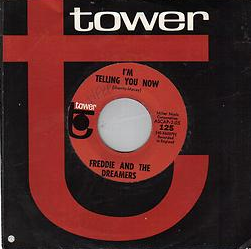 It's a question every vinyl addict likes to ask. It isn't something the current generation of "music" lovers will be able to do in the future with the same feeling. "What was your first download?" doesn't have the same ring and not an ounce of romance. Thank God for hipsters and vinyl.
It's a question every vinyl addict likes to ask. It isn't something the current generation of "music" lovers will be able to do in the future with the same feeling. "What was your first download?" doesn't have the same ring and not an ounce of romance. Thank God for hipsters and vinyl.There are, though, important distinctions to make when considering your first album. There's the first record you ever owned and the first you bought. For example, my mother bought me my first single - Freddy and the Dreamers' "I'm Telling You Now - in 1965 for memorizing the Pledge of Allegiance. Apparently, I used to groove around the house to it when it was on the radio, so she got it for me to play on my brother's Silvertone record player. I can still see it in my mind's eye. It was on the Tower label with a big red t on the sleeve.
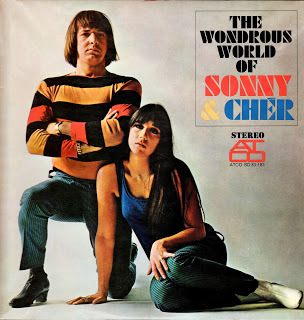 The first album bought for me, Christmas 1966, was The Wondrous World of Sonny and Cher. My parents had split up by then, so when I saw my father, later that same day, I was even more overjoyed when he gave me The Mamas and the Papas, the one where they're all in the bathtub.
The first album bought for me, Christmas 1966, was The Wondrous World of Sonny and Cher. My parents had split up by then, so when I saw my father, later that same day, I was even more overjoyed when he gave me The Mamas and the Papas, the one where they're all in the bathtub.While presents are well and good, we only really start collecting records when we buy them for ourselves. It's how we build a badge of identity; some of us were luckier than others. For seven weeks I saved up an allowance of 50¢ per week and walked up to the record store with my grandmother for Sgt. Pepper. I didn't have the sales tax, which is why one brings along one's grandmother. How lucky.
I don't remember the second or the third album I bought, but 50 years later I remember that day. So what's yours?
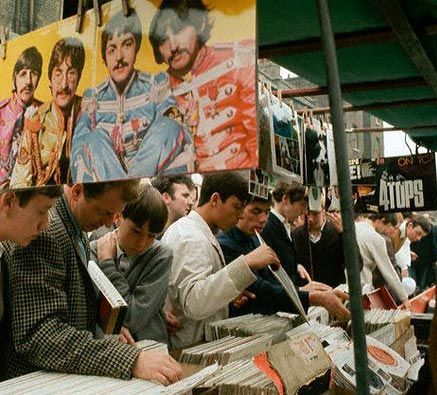
Published on March 29, 2018 17:04
Jay and the Americans @ Kate's Books - A Jay Wicks Roadtrip
 Jay and the Americans has been available online on Amazon and Kindle for the past several months, and you can read it today on KindleUnlimited for my favorite price: free!
Jay and the Americans has been available online on Amazon and Kindle for the past several months, and you can read it today on KindleUnlimited for my favorite price: free!And now, Jay is coming to a bookstore near you. The novel's first stop is Skylight Books on Vermont Avenue in the Los Feliz section of L.A. Growing up, Catterton's was a book nerd's paradise. Today, Chatterton's is the far cooler Skylight Books. Skylight looks like a bookstore on a Hollywood set and has everything cool under the sun; including Jay and the Americans.
Next week, Jay will be on the road to Jerome, AZ where he will stop off at Kate's Books. Jerome, like L.A., plays a major role in Jay and the Americans, and it is one of my favorite places. It's like a step back in time. The former ghost town is the hippest place in Arizona and Kate's Books, which hangs out over a precipice like the rest of the town, is a bookie's dream. If you're at Skylight or can make it up to Kate's in Jerome, pick up Jay and the Americans.
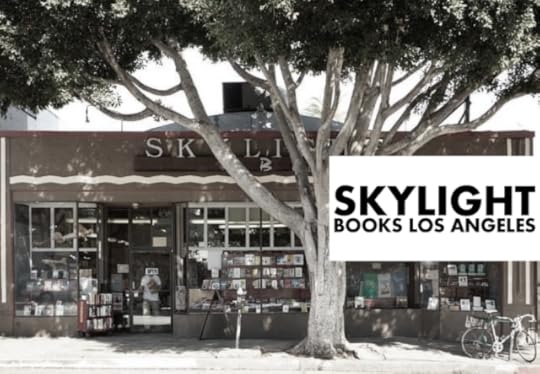
Published on March 29, 2018 07:27
March 28, 2018
10 LPs... - Part 2
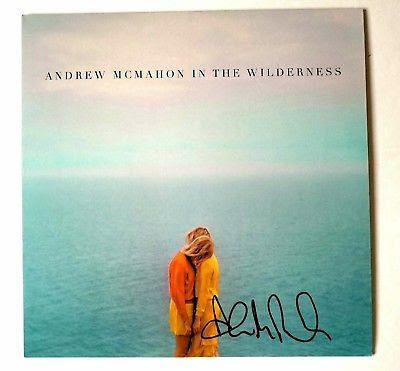 5. Dark Side of the Moon. I know. This wasn't supposed to be about specific LPs. It was supposed to take a more eclectic approach and ferret out those must-haves that everyone shoves down your throat in an effort to replace them with LPs that you will want to show everybody. But Dark Side is the exception. The White Album isn't as personal as Revolver or Pepper, but collector value is more than just financial; it's nearly like owning a work of art. So, The White Album doesn't break these post rules, and while DSOMT does, it's still an LP that everyone should have and most people will want to have in their collection. Sorry, but in this case, if you don't want it, you're an idiot. Get yourself a classic copy or one on 180-gram vinyl, but get it.
5. Dark Side of the Moon. I know. This wasn't supposed to be about specific LPs. It was supposed to take a more eclectic approach and ferret out those must-haves that everyone shoves down your throat in an effort to replace them with LPs that you will want to show everybody. But Dark Side is the exception. The White Album isn't as personal as Revolver or Pepper, but collector value is more than just financial; it's nearly like owning a work of art. So, The White Album doesn't break these post rules, and while DSOMT does, it's still an LP that everyone should have and most people will want to have in their collection. Sorry, but in this case, if you don't want it, you're an idiot. Get yourself a classic copy or one on 180-gram vinyl, but get it.4. Get something signed. My wife and I have followed Andrew McMahon since the 90s when he was in Something Corporate. We saw Jack's Mannequin 20 or 30 times over a five year period and if my daughter was to assemble this collection, her "childhood" LP would be Everything in Transit, as the, urg, CD that sat by the stereo. We have a signed CD, a signed copy of an Andrew McMahon in the Wilderness LP and a poster that he signed at a concert we saw in Delray Beach, Florida. If you follow a local band or have the gumption to wait at a tour bus, keep an LP in the car and get your fave local artist to sign it. You'll remember the moment every time you pick it up. Alternately, check out eBay and ETSY and get a signed copy of The Queen is Dead or Pablo Honey, whatever. That'll cost you, but it's worth it.
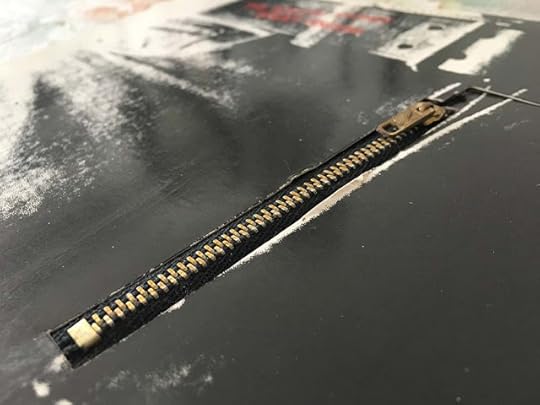 3. Zero in on a go-to LP. For more than 30 years, I've played Peter Gabriel's eponymous first LP as the inaugural vinyl for a new home. This list hopes to keep value in mind. That mint condition LP you love is an investment indeed, but no matter what circumstances you find yourself in, don't ever sell it. Its value is far greater in your collection than out of it. My Peter Gabriel is reasonably valueless – picked up for $3.99 most anywhere, but for me it means "home."
3. Zero in on a go-to LP. For more than 30 years, I've played Peter Gabriel's eponymous first LP as the inaugural vinyl for a new home. This list hopes to keep value in mind. That mint condition LP you love is an investment indeed, but no matter what circumstances you find yourself in, don't ever sell it. Its value is far greater in your collection than out of it. My Peter Gabriel is reasonably valueless – picked up for $3.99 most anywhere, but for me it means "home."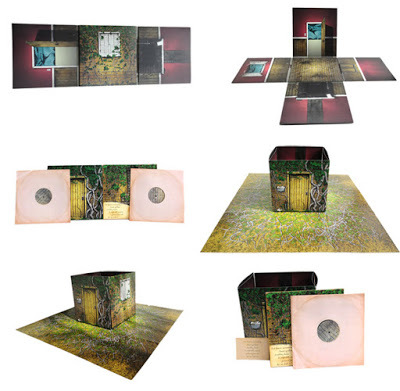 2. An LP with a gadget. You've already got yourself that mint condition favorite LP, now it's time to splurge once again; this time one something truly unique. The LPs that come most readily to mind are the Andy Warhol designed Sticky Fingers and The Velvet Underground and Nico. The first, of course, has a brass zipper on what many, incorrectly, believe is Mick's jeans. And the VU LP has the banana. An original issue of the latter is put into three categories (aside from condition – though condition plays a lessened role): Unpeeled ($$$$), partially peeled ($$$) and peeled ($$). While the monetary value is there, a partially peeled or unpeeled version is far more appealing (forgive me). The 7 inch XTC "No Thugs is Our House," while not an LP, is another great example. A more obscure suggestion is Explosions in the Sky's Take Care, Take Care, Take Care, which folds out into a house in the country that sits on a poster of a green lawn. Others: Zeppelin's Physical Grafitti or LZ3, The Stones' Some Girls, Alice Cooper's School's Out with the pink panties, New Order's Lowlife, Bob Marley's Catch a Fire, Lennon's Walls and Bridges or Kate Bush's three-sided Sensual World (I'll let you discover that oddity on your own).
2. An LP with a gadget. You've already got yourself that mint condition favorite LP, now it's time to splurge once again; this time one something truly unique. The LPs that come most readily to mind are the Andy Warhol designed Sticky Fingers and The Velvet Underground and Nico. The first, of course, has a brass zipper on what many, incorrectly, believe is Mick's jeans. And the VU LP has the banana. An original issue of the latter is put into three categories (aside from condition – though condition plays a lessened role): Unpeeled ($$$$), partially peeled ($$$) and peeled ($$). While the monetary value is there, a partially peeled or unpeeled version is far more appealing (forgive me). The 7 inch XTC "No Thugs is Our House," while not an LP, is another great example. A more obscure suggestion is Explosions in the Sky's Take Care, Take Care, Take Care, which folds out into a house in the country that sits on a poster of a green lawn. Others: Zeppelin's Physical Grafitti or LZ3, The Stones' Some Girls, Alice Cooper's School's Out with the pink panties, New Order's Lowlife, Bob Marley's Catch a Fire, Lennon's Walls and Bridges or Kate Bush's three-sided Sensual World (I'll let you discover that oddity on your own).1. That's it. Now you're on your own. It's easy to find a great mint condition whatever in your local vinyl shop. Just as simple to grade that LP, and pricing guides are available online. But No. 1 relies on your expertise. If we all knew how valuable low-numbered White Albums would be, we wouldn't have trashed them; we wouldn't have peeled the banana off; we'd still have those panties. Take a stab at posterity on your own. What album that today you get for $3.99 will have great value in the future? What's The White Album of 50 years from now? Could be something vintage that no one has grasped yet. Maybe something from the 80s that's cool as hell but its value hasn't caught up yet. Could be something new on 180-gram vinyl – you decide. You're a collector now, show your expertise.
When I posted Part 1 of this topic, comments poured in: "But what are your faves" was the consensus. That kind of screws up the gist, but oh, well, here you go (these are not necessarily my favorite LPs): 10. Sticky Fingers; 9. A Top Flap U.K. pressing, low numbered White Album (I don't have one); 8. Dark Side of the Moon; 7. Mint Led Zeppelin 3; 6. PIL in the silver film can; 5. Alice Cooper's Schools Out with pink panties; 4: Rolling Stones' Her Majesties Satanic Request with the cover lenticular; 3 Unpeeled banana cover; 2. Mono Sgt. Pepper; The Beach Boys' Pet Sounds, also in mono. What's important to note is that tomorrow this list will change; nothing is said and done.
Published on March 28, 2018 03:44
March 27, 2018
Jay and the Americans @ Skylight Books - A Jay Wicks Roadtrip
 Jay and the Americans has been available online on Amazon and Kindle for the past several months, and you can read it today on KindleUnlimited for my favorite price: free!
Jay and the Americans has been available online on Amazon and Kindle for the past several months, and you can read it today on KindleUnlimited for my favorite price: free!And now, Jay is coming to a bookstore near you. The novel's first stop is Skylight Books on Vermont Avenue in the Los Feliz section of L.A. Growing up, Catterton's was a book nerd's paradise. Today, Chatterton's is the far cooler Skylight Books. Skylight looks like a bookstore on a Hollywood set and has everything cool under the sun; including Jay and the Americans.
Next week, Jay will be on the road to Jerome, AZ where he will stop off at Kate's Books. Jerome, like L.A., plays a major role in Jay and the Americans, and it is one of my favorite places. It's like a step back in time. The former ghost town is the hippest place in Arizona and Kate's Books, which hangs out over a precipice like the rest of the town, is a bookie's dream. If you're at Skylight or can make it up to Kate's in Jerome, pick up Jay and the Americans.

Published on March 27, 2018 11:50
March 26, 2018
The 10 LPs every collector should own... Part 1
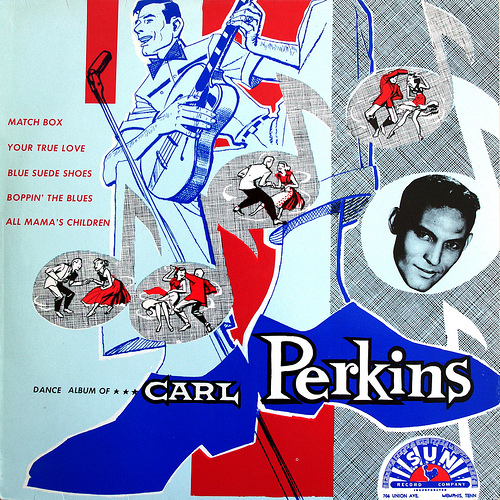 Doesn't matter who you are, the impact of your writing, or your website - if you create a definitive list of the 10 LPs that every record enthusiaste must own, you'll do nothing but create havoc for yourself; indeed, you're probably wrong, and frankly you should have avoided the topic all together. Instead, your focus should have been an article about the ten records that mean the most to you as a critic, or the ten most collectible... something that is either your opinion or measurable and inarguable.
Doesn't matter who you are, the impact of your writing, or your website - if you create a definitive list of the 10 LPs that every record enthusiaste must own, you'll do nothing but create havoc for yourself; indeed, you're probably wrong, and frankly you should have avoided the topic all together. Instead, your focus should have been an article about the ten records that mean the most to you as a critic, or the ten most collectible... something that is either your opinion or measurable and inarguable.If I were to choose for you, most of the readers at AM would know exactly what to expect. The choices wouldn't all be AM 10s, but they would nonetheless be relatively predictable. Instead, AM would like to offer up the 10 LPs that you, as an individual, with your tastes and opinions, should have in your collection. It's not magic or ESP. Here's Part 1:
No. 10: The White Album. It's not The Beatles best LP, though it may be to you; indeed its more a compilation of solo tracks not unlike Deja Vu. While a stellar LP nonetheless, The White Album is also the most important collectible LP. It's a rare group of individuals who knows of or truly understands the significance of the "butcher cover" (The Beatles, Yesterday and Today, Capitol, 1966) or can track down an "Unpeeled" Velvet Underground and Nico, but The White Album, officially The Beatles, is No. 10 on the list because everyone's copy is a thing of value. The unique numbering on both the U.K. and American releases has never been duplicated. And it doesn't matter if you had it as a kid and drew all over it, or it has a coffee cup ring - it's value remains. Indeed, that copy you've had all these years is a personal thing; keep it, cherish it, draw on it some more, if you like. Then go out and splurge on a nice copy with the posters and the photos and a low number. It's a solid investment.
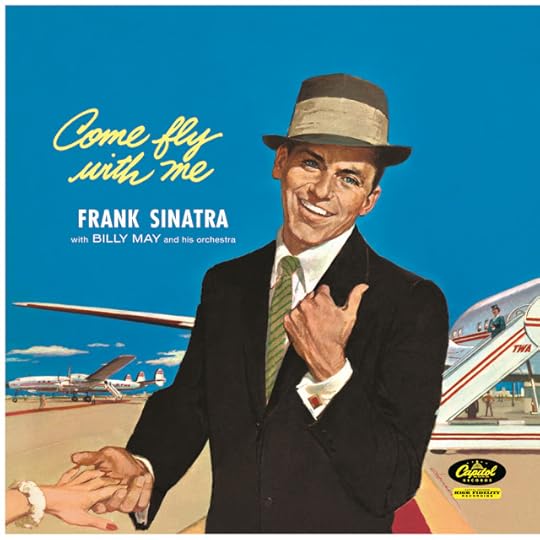
No. 9: (I suppose The White Album should be number 9, number 9, number 9; instead:) Many of our readers had their informative years in the 60s and 70s. With that in mind, No. 9 in our countdown is an LP by your favorite artist, which may very well be something you already own. If not, get yourself a mint condition copy of your favorite LP by your favorite artist. Both Crosby, Stills and Nash and Deja Vu, for instance, are classic LPs in iconic sleeves. The eponymous first LP has that iconic Henry Diltz photo of the trio sitting on a porch, and the latter has what may be the most handsome cover ever made, with its leather-like marbling and paste on photo - but these are just examples. For me, that LP is a mint condition mono Pet Sounds from The Beach Boys. Get yourself that first blue Weezer or NIN; doesn't matter - it needs only matter to you.
No. 8: In your collection you should have a record that was a part of your childhood; an LP that your parents listened to or an older sibling - something that you can hear in your head when you were growing up. Having come from a family in the industry, this one's a hard choice for me. I'd either choose Jackie Gleason's Music for Lovers Only or Bobby Vinton's Greatest Hits. I can see in my mind both of them leaning against our console Magnavox stereo. Just looking at the cover should conjure up some kind of youthful imagery.
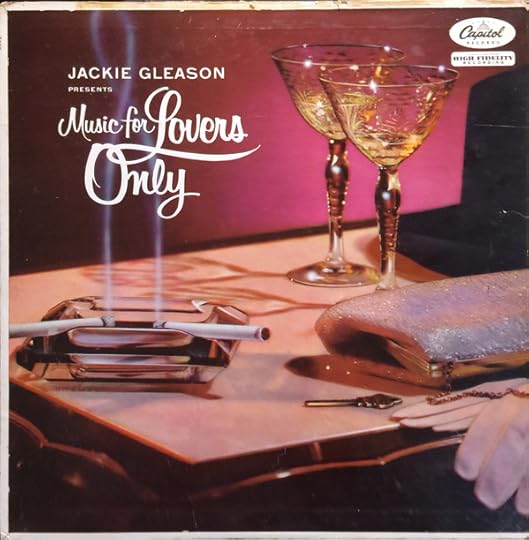
No. 7: A Frank Sinatra LP. I suggest either The Wee Small Hours of the Morning or Come Fly With Me. Choose either for its iconic cover painting which oozes 50s cool. Wee Small Hours is the more critically acclaimed LP here and is arguably the first concept album, while the songs are a bit melancholy. Come Fly With Me is far more accessible and full of hits. Either way, these are LP covers worthy of a frame, and tracks from the most iconic name in recorded music.
No. 6: Along the same lines, every collector should own a Sun Records LP. While AM's focus is often L.A. in the 60s, no collection can be without something by Elvis, Johnny Cash, Jerry Lee or Carl Perkins. Aside from the way-cool sun label, there's a gritty garage feel to each LP. My faves are Greatest! by Johnny Cash or Carl Perkins' Dance Album of Carl Perkins. Like Sinatra, these are way cool with a bad boy bent.
Published on March 26, 2018 23:31



